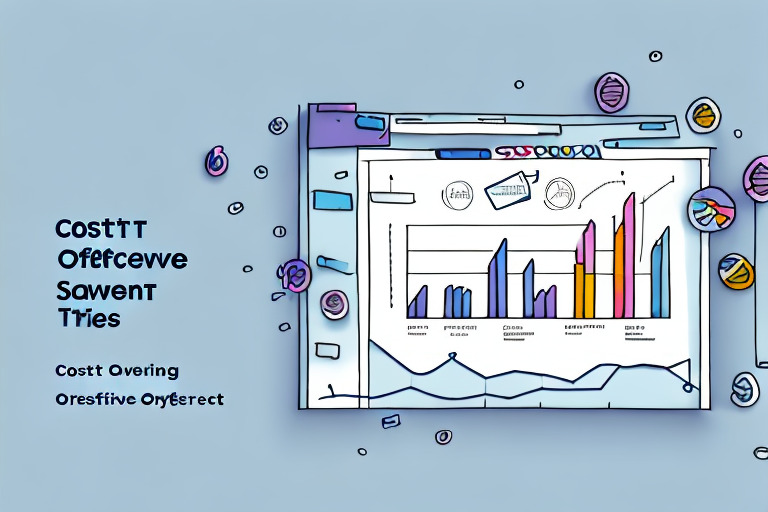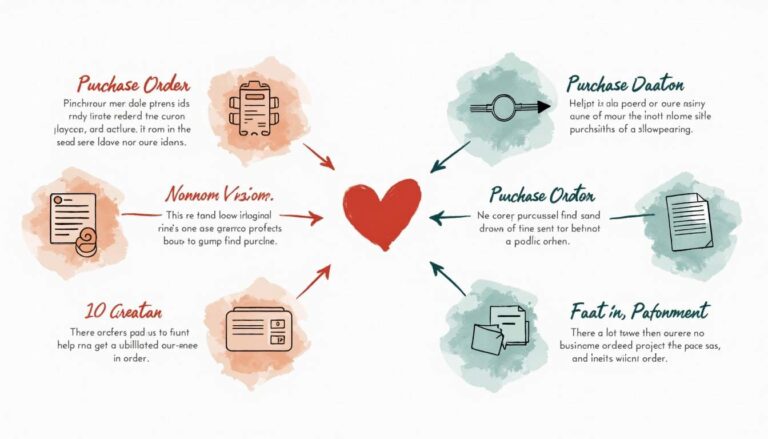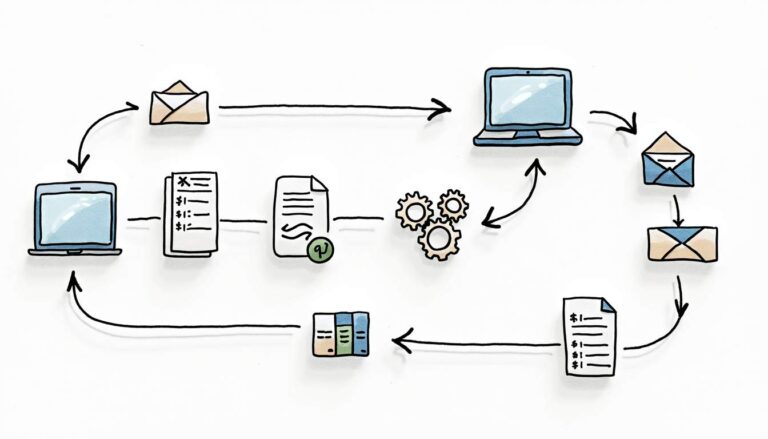In today’s competitive business landscape, managing procurement costs is more important than ever. Purchase order cost management is a key component of any comprehensive procurement strategy that aims to optimize resources and savings. In this article, we will discuss the best practices that will help you effectively manage purchase order costs.
Understanding Purchase Order Cost Management
Purchase order cost management refers to the process of controlling and reducing the costs associated with purchasing goods or services for your organization. The goals of purchase order cost management include improving purchasing efficiency, ensuring contractual compliance, and reducing maverick spend.
One important aspect of purchase order cost management is setting up policies that guide procurement activities. These policies can include guidelines on vendor selection, pricing, and quality standards. By establishing clear policies, organizations can ensure that their procurement activities are aligned with their overall business objectives.
Another critical component of purchase order cost management is creating a purchase order system. A well-designed purchase order system can help organizations track their procurement activities and ensure timely delivery of goods and services. The system should include features such as automated approval workflows, real-time tracking, and reporting capabilities.
What is Purchase Order Cost Management?
Vendor management is also an essential aspect of purchase order cost management. Organizations should establish strong relationships with their vendors to ensure that they receive the best possible pricing and service. This can involve negotiating long-term contracts, establishing performance metrics, and conducting regular vendor reviews.
Identifying and controlling costs is another critical component of purchase order cost management. Organizations should conduct regular cost analyses to identify areas where they can reduce expenses. This can involve analyzing spending patterns, identifying areas of waste, and implementing cost-saving measures.
Importance of Effective Cost Management in Procurement
Effective cost management in procurement can have several benefits for organizations. For example, it can help them reduce operational costs and improve cash management. By controlling costs, organizations can free up resources that can be used to invest in other areas of their business.
Effective cost management can also help organizations mitigate risks associated with procurement. By establishing clear spend management policies and procedures, organizations can reduce the risk of fraud, errors, and other procurement-related issues. Additionally, effective cost management can help organizations ensure better supplier performance, which can lead to improved quality and delivery of goods and services.
In conclusion, purchase order cost management is an essential process for organizations that want to improve their procurement activities and reduce costs. By setting up policies, creating a purchase order system, managing vendors, and identifying and controlling costs, organizations can achieve their procurement objectives and improve their overall business performance.
Implementing a Purchase Order System
Implementing a purchase order system is a crucial step towards optimizing procurement costs. A well-designed purchase order system can help automate processes, track orders, and provide visibility into supplier performance. In today’s fast-paced business environment, it is essential to have a system that can keep up with the demands of your organization. Here are some best practices to consider when implementing a purchase order system:
Choosing the Right Purchase Order Software
Choosing the right purchase order software is a critical decision that can impact the success of your procurement strategy. With so many options available in the market, it is important to invest in software that meets the specific needs of your organization. Some of the features to consider when choosing a purchase order software include:
- Ability to manage invoices and approvals
- Automatic budget tracking
- Integration with accounting systems
- Customizable workflows
- Supplier performance tracking
By selecting a software that meets your organization’s specific needs, you can streamline your procurement processes and achieve greater efficiency.
Integrating the System with Existing Processes
Integrating the purchase order system with your organization’s existing processes is crucial for ensuring a smooth transition and minimizing disruptions. This includes setting up clear workflows, training employees, and ensuring that all stakeholders understand the benefits of the new system. Some of the key considerations when integrating the system with your existing processes include:
- Identifying the key stakeholders and involving them in the implementation process
- Mapping out the current procurement processes and identifying areas for improvement
- Communicating the benefits of the new system to all stakeholders
- Establishing clear roles and responsibilities for all employees involved in the procurement process
By taking the time to integrate the purchase order system with your existing processes, you can minimize disruptions and ensure a seamless transition.
Training Employees on the New System
Training employees on the new purchase order system is crucial for effective implementation. Employees should be trained on the system’s features, processes, and workflows, and the benefits of using the system. It is also important to provide ongoing training and support to ensure that employees can use the system effectively. Some of the key considerations when training employees on the new system include:
- Providing comprehensive training on the system’s features and functionality
- Offering hands-on training to ensure that employees are comfortable using the system
- Providing ongoing support and training to address any issues or questions that arise
- Encouraging employees to provide feedback on the system to identify areas for improvement
By investing in comprehensive training and support for your employees, you can ensure that the purchase order system is effectively implemented and used to its full potential.
Streamlining the Procurement Process
Streamlining the procurement process can help reduce costs and improve efficiency. By adopting best practices, organizations can optimize their procurement operations and achieve significant savings.
Centralizing Procurement Operations
Centralizing procurement operations can improve coordination and increase visibility into supplier performance. It also allows organizations to benefit from economies of scale and negotiate better pricing from suppliers.
For example, a global manufacturing company with decentralized procurement operations found that it was paying significantly higher prices for the same products across different regions. By centralizing its procurement operations, the company was able to negotiate better pricing and achieve cost savings of over 20%.
Reducing Supplier Base
Reducing the number of suppliers can help simplify the procurement process and reduce administrative costs. It also allows organizations to build stronger relationships with key suppliers and leverage their buying power to negotiate better pricing and terms.
However, reducing the supplier base should be done strategically to avoid over-reliance on a small number of suppliers. Organizations should conduct a thorough analysis of their supplier portfolio and identify suppliers that offer the best value and quality.
Implementing Standardized Procedures
Implementing standardized procedures can help improve consistency and reduce errors in the procurement process. This includes creating templates for purchase orders, defining approval processes, and establishing clear communication channels with suppliers.
For instance, a healthcare organization implemented a standardized procurement process that included a centralized purchasing system and clear guidelines for supplier selection and evaluation. This resulted in a 30% reduction in procurement cycle time and a 15% reduction in procurement costs.
Moreover, standardized procedures can improve compliance with regulatory requirements and reduce the risk of fraud and corruption.
In conclusion, streamlining the procurement process is essential for organizations looking to achieve cost savings and improve operational efficiency. By centralizing procurement operations, reducing the supplier base, and implementing standardized procedures, organizations can optimize their procurement operations and achieve significant benefits.
Negotiating with Suppliers
Negotiating with suppliers is a critical component of effective procurement. It involves a series of strategic and tactical activities aimed at securing the best possible terms and conditions for the purchase of goods or services. Effective negotiation can help organizations achieve a range of benefits, including cost savings, improved quality, reduced lead times, and enhanced supplier relationships.
Building Long-Term Supplier Relationships
Building long-term relationships with suppliers is a key strategy for successful procurement. By working closely with suppliers over time, organizations can ensure quality, reduce lead times, and improve pricing. To build effective long-term relationships, it is important to establish clear expectations and communicate regularly with suppliers. This can help build trust and identify opportunities for improvement. Organizations should also consider investing in supplier development programs to help suppliers improve their processes and capabilities.
Furthermore, building long-term relationships with suppliers can help organizations gain access to new products and technologies, as well as exclusive deals and discounts. By working closely with suppliers, organizations can also gain valuable insights into market trends and customer needs.
Leveraging Volume Discounts
Leveraging volume discounts is a common strategy for reducing procurement costs. This involves negotiating discounts with suppliers based on the volume of goods or services purchased. By committing to larger orders, organizations can often secure lower prices and better terms from suppliers.
In addition to volume discounts, organizations can also explore other types of discounts, such as early payment discounts or loyalty rewards. These can help organizations reduce costs and optimize their purchasing power.
Exploring Alternative Pricing Models
Exploring alternative pricing models is another way that organizations can reduce procurement costs over time. For example, adopting a fixed-price model can help organizations avoid price fluctuations and reduce the risk of cost overruns. Similarly, partnering with suppliers on cost-sharing initiatives can help reduce costs while maintaining quality.
Other alternative pricing models that organizations can explore include gain-sharing agreements, where suppliers are rewarded for achieving cost savings, and value-based pricing, where suppliers are paid based on the value they deliver to the organization.
Ultimately, effective negotiation with suppliers requires a combination of strategic planning, effective communication, and a willingness to explore new ideas and approaches. By adopting best practices and building strong relationships with suppliers, organizations can achieve significant benefits and gain a competitive advantage in the marketplace.
Conclusion
Effective purchase order cost management requires a comprehensive strategy that includes implementing a well-designed purchase order system, streamlining procurement processes, and negotiating effectively with suppliers. By following the best practices outlined in this article, organizations can optimize procurement costs and position themselves for success in today’s competitive business environment.
Are you struggling with controlling costs on your procurement? Bellwether’s automated solution might just be what you need. Book a personalized demo today to see it in action.







